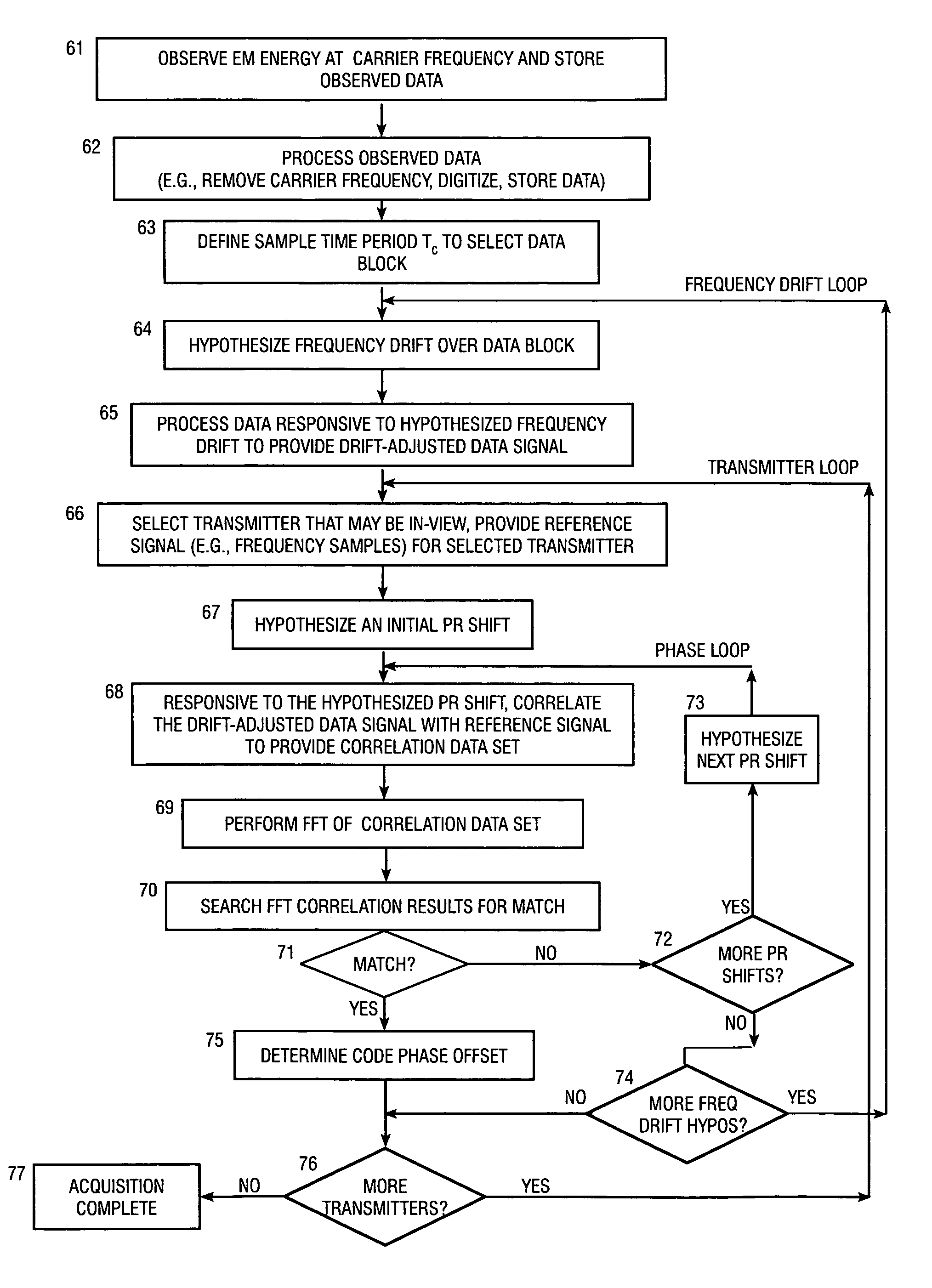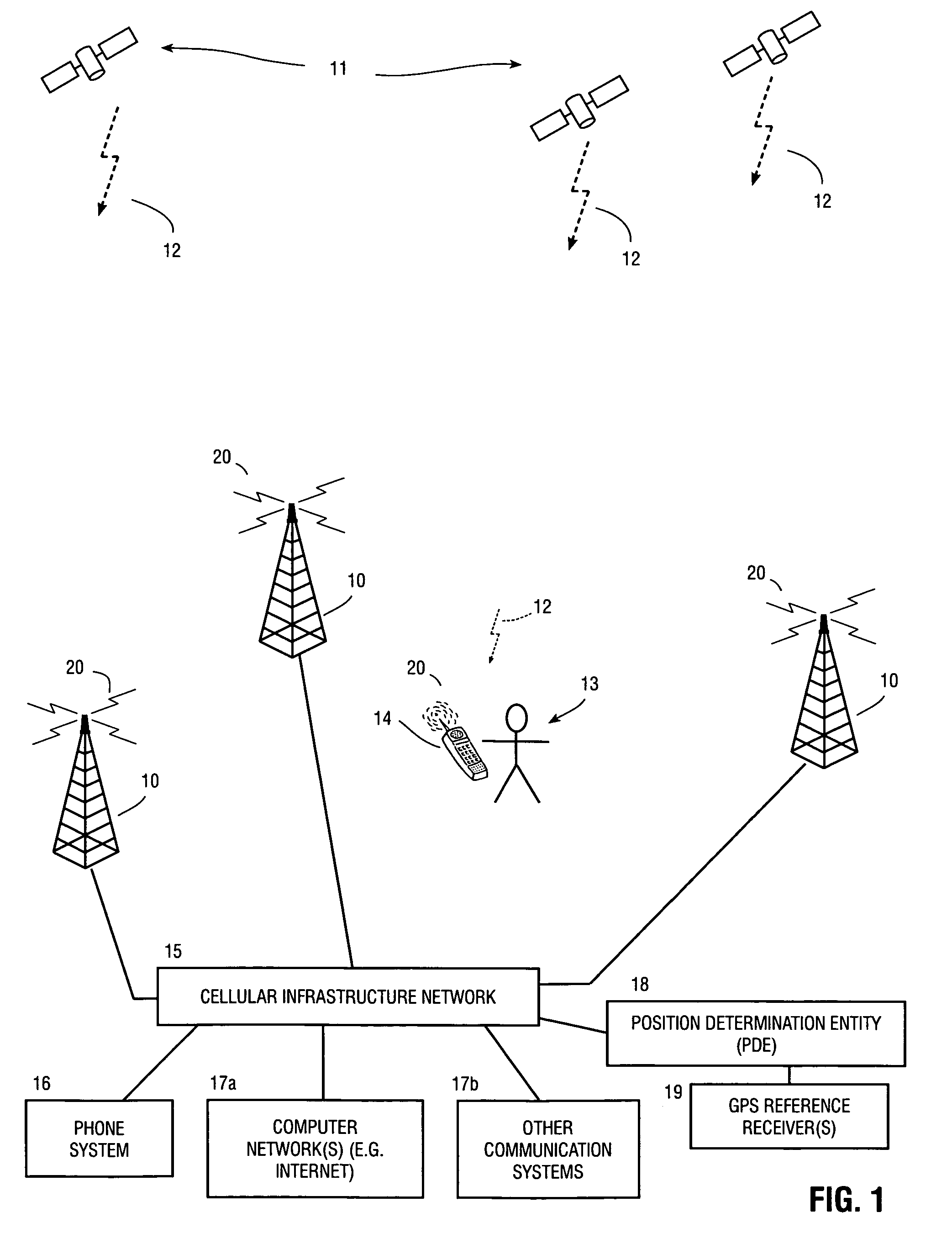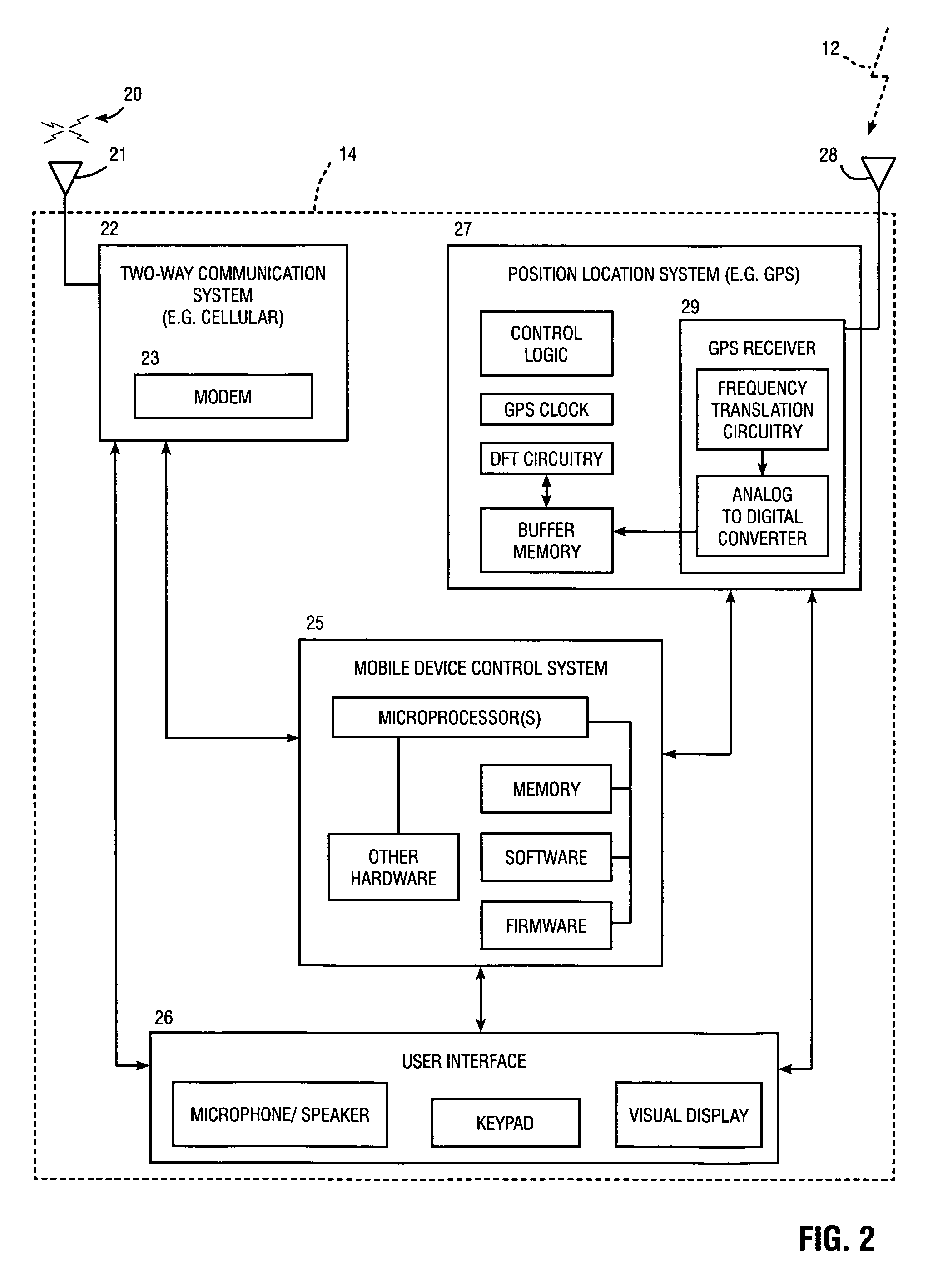Method and apparatus for increasing coherent integration length while receiving a positioning signal
a technology of coherent integration and positioning signal, which is applied in the direction of pulse technique, amplitude demodulation, instruments, etc., can solve the problems of reducing the power of the receiver, reducing the coherent integration length, and difficult to receive positioning signals from gps satellites. achieve the effect of increasing the coherent integration length
- Summary
- Abstract
- Description
- Claims
- Application Information
AI Technical Summary
Benefits of technology
Problems solved by technology
Method used
Image
Examples
Embodiment Construction
[0026]This invention is described in the following description with reference to the Figures, in which like numbers represent the same or similar elements.
[0027]The FFT and DFT algorithms discussed herein are used to illustrate examples of algorithms that generate frequency samples. More generally, any suitable algorithm that generates appropriate frequency samples may be utilized as an alternative to the FFT and DFT algorithms. For example, the frequency samples may be generated using a DFT-like algorithm where the number and spacing of the frequency domain samples is not exactly that of a DFT; i.e., more or less frequency samples may be computed, and the spacing between the frequency domain samples may be narrower than that of a standard DFT operation. The frequency samples may be generated from digital or analog data, from observed data, or from previously calculated values. The calculated frequency samples are then used for subsequent operations.
Glossary of Terms and Acronyms
[00...
PUM
 Login to View More
Login to View More Abstract
Description
Claims
Application Information
 Login to View More
Login to View More - R&D
- Intellectual Property
- Life Sciences
- Materials
- Tech Scout
- Unparalleled Data Quality
- Higher Quality Content
- 60% Fewer Hallucinations
Browse by: Latest US Patents, China's latest patents, Technical Efficacy Thesaurus, Application Domain, Technology Topic, Popular Technical Reports.
© 2025 PatSnap. All rights reserved.Legal|Privacy policy|Modern Slavery Act Transparency Statement|Sitemap|About US| Contact US: help@patsnap.com



